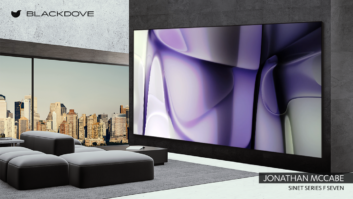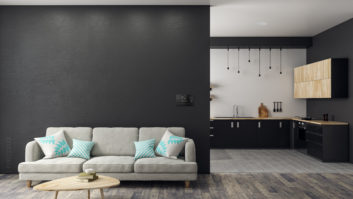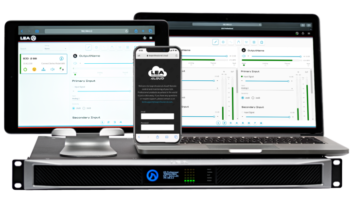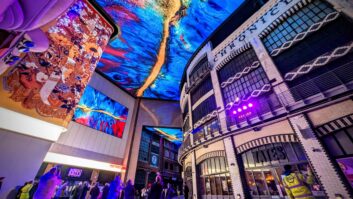Integrators hanging out by the water coolers at last year’s CEDIA Expo in Denver would have heard plenty about the growing overlaps between residential and commercial technologies. In fact, this resimercial buzz was fuelled in no small part by Crestron, who made it a focus of its booth at the residential-facing show.
“This year at CEDIA, we decided to have a section of the booth called ‘Opportunities Beyond the Home’, and in that space, we built a hotel guest room,” explains Michael Short, Crestron’s senior director hospitality and residential marketing. The idea was to inspire residential dealers to take their experience with the Crestron Home platform, which they know so well from high end residential projects, and apply that knowledge to small boutique hotels or even larger hotel conglomerates.
“We know a lot of these dealers are doing small boutique hotels and maybe public spaces, a little bit of audio and video in restaurants, so we explained how they can use the skills they already have to transform the guest room experience, be it with audio or video distribution, lighting, shading, or climate control,” he adds. “We illustrated how well it integrates with guest room management systems.”
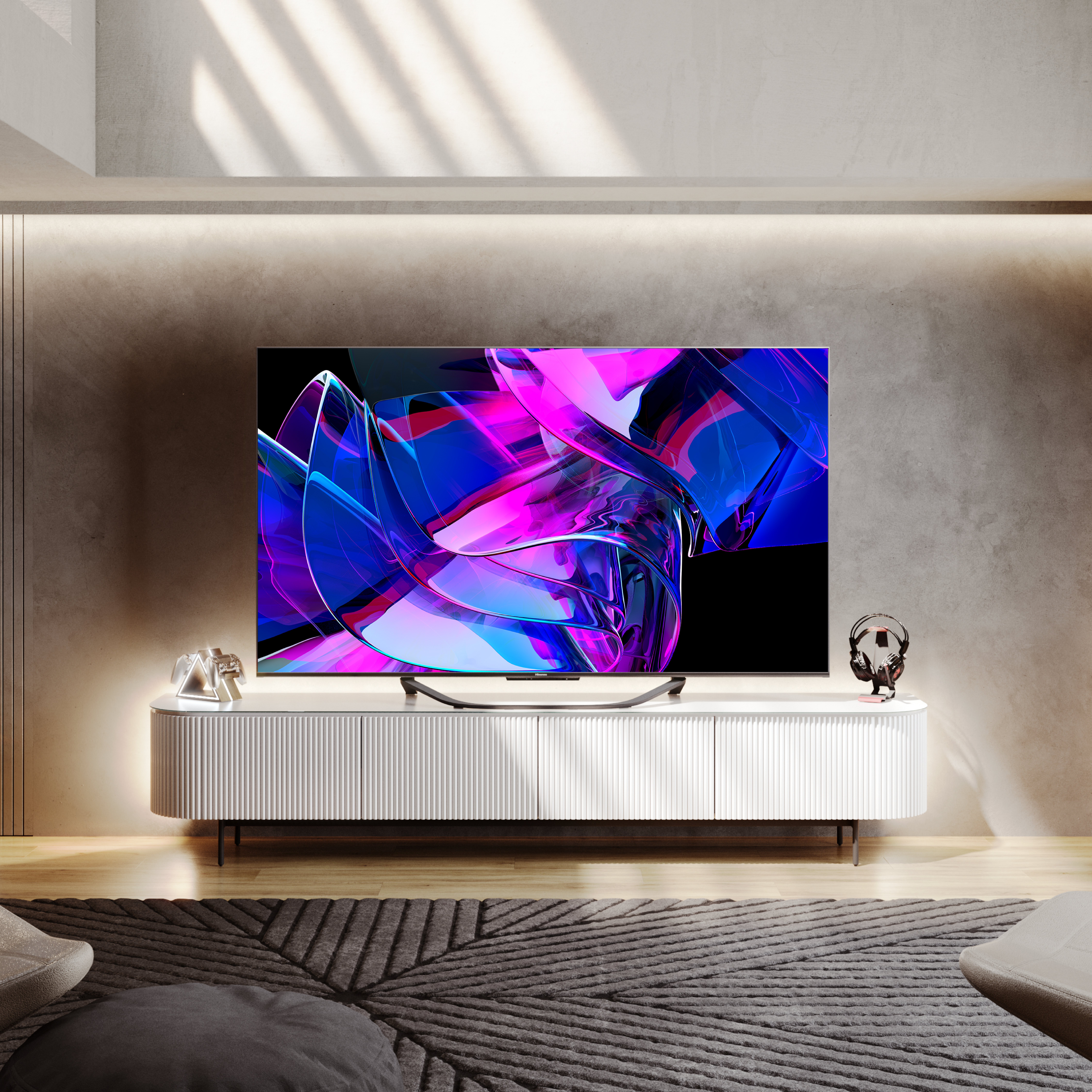 There’s a world of opportunities for residential integrators to apply their skills and Crestron platforms in the commercial space, says Short: “A lot of these resi dealers are already applying their knowledge to do local bars and restaurants, using Custom Crestron to offer lighting control, shading control and to distribute audio and video.
There’s a world of opportunities for residential integrators to apply their skills and Crestron platforms in the commercial space, says Short: “A lot of these resi dealers are already applying their knowledge to do local bars and restaurants, using Custom Crestron to offer lighting control, shading control and to distribute audio and video.
“There’s no reason why this can’t expand to meeting room solutions, the local accountancy office, local businesses – and small meeting rooms lead to large conference rooms. Some of our latest, more innovative solutions, like the Crestron Videobar 70, and AirMedia, are really simple to deploy meeting room solutions.”
GAME CHANGER
For Crestron, the introduction of its DigitalMedia content distribution platform in 2008, and the arrival of DM NVX in 2017 was the game changer.
“That AV over IP product platform was built for Crestron to use across every channel,” explains Short. “It isn’t a commercial product, it isn’t a residential product. It’s a Crestron AV over IP product, and it’s the cornerstone of what we do across every single channel. It weaves into commercial spaces, through meeting room solutions, into residential homes.
“It powers audio and video across every single space, so you can access entertainment everywhere inside homes or outside, and vice versa, in commercial spaces like restaurants and bars. It’s the bedrock of our crossover solutions.”
According to a forecast by pro AV trade body AVIXA, spending on AV products and services in the residential market will grow at a CAGR of 2.6 per cent from 2023 to 2028. This compares with an overall industry average of 5.6 per cent over the same period.
“The pandemic has amplified the need for diversification in all businesses, particularly integrators who saw much of their traditional lifeblood markets impacted in the negative,” says Sean Wargo, vice president of market intelligence.
“Residential integrators benefited in the short-term, from money flowing into home projects when consumers were stuck in their houses, but with interest rates now high and consumers focused outside the home, that core opportunity has declined somewhat,” he says.
 “Yes, there is still a need for kitting of home office spaces, but there is a bigger opportunity elsewhere.” Specifically, in local hospitality, retail, and venues space where related companies are looking to step up their game for attracting and keeping customers in engaging experiences.
“Yes, there is still a need for kitting of home office spaces, but there is a bigger opportunity elsewhere.” Specifically, in local hospitality, retail, and venues space where related companies are looking to step up their game for attracting and keeping customers in engaging experiences.
“Rather than be about residential integrators working on enterprise conferencing and collaboration, there is a bigger need in the local hospitality, retail, and venues space where related companies are looking to step up their game for attracting and keeping customers with engaging experiences,” he goes on. “That experience economy and the markets impacted by it ,show greater growth for AV spend, to the tune of 6.7 per cent.”
DRIVING CONVERGENCE
Wargo agrees with Crestron’s Michael Short, that AV over IP is a driver.
“It’s definitely a part of what is accelerating the build-out and enhancement of experiences, since those often come down to content management and distribution within a facility or venue,” he says. “AoIP facilitates and simplifies that task, particularly in the current iterations. Control platforms then make good use of that same infrastructure.”
About the hype surrounding resimercial, Wargo comments: “This push toward harvesting a more diverse opportunity through resimercial offerings is somewhat mutual between integrators and vendors, since they both stand to gain.” Integrators want and need more places to apply their skills and vendors are always seeking new places and ways for their hardware to be deployed, he says.
“It may be that at any given time one of the two is keener to take up the charge, but on balance they share the motivation. If there were any leaning at the moment, one might argue a bit more for integrators needing this but that will largely depend on how strong their portfolio of business already is.”
Rather than being about residential integrators working on enterprise conferencing and collaboration, there is a bigger need in the local hospitality, retail, and venues space where related companies are looking to step up their game for attracting and keeping customers with engaging experiences, says Wargo. “That experience economy and the markets impacted by it show greater growth for AV spend, to the tune of 6.7 per cent.”
COMMERCIAL APPEAL
Even as professional solutions like AoIP migrate to residential projects, home tech has growing commercial appeal.
One obvious reason is the proliferation of ‘extreme’ hardware. A few years ago, the idea of a 100in flatscreen entering the mainstream market would seem fanciful, but Hisense recently added a 100in model to its popular, and well specified, U7K line of Mini LED screens; features include Dolby Vision and IMAX Enhanced certification, and a 144Hz Game Pro mode. It retails for £4,999.
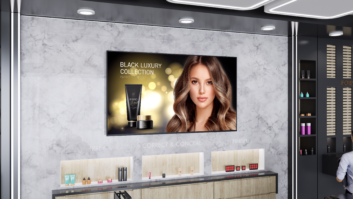 Similarly, Sharp has introduced the CP-LS100 SumoBox. Co-developed with French Hi-Fi outfit Devialet, this 120W £399 speaker adopts a pro audio form factor. “We anticipate that for commercial use, the SumoBox would be an ideal product for gym classes, corporate events, or travelling DJs who might want to use a truly mobile solution for events like weddings,” a Sharp spokesperson told us.
Similarly, Sharp has introduced the CP-LS100 SumoBox. Co-developed with French Hi-Fi outfit Devialet, this 120W £399 speaker adopts a pro audio form factor. “We anticipate that for commercial use, the SumoBox would be an ideal product for gym classes, corporate events, or travelling DJs who might want to use a truly mobile solution for events like weddings,” a Sharp spokesperson told us.
The CP-LS100 supports XLR cable connections, with speaker-linking, which allows daisy-chaining or sending the output to a mixing console, so that the SumoBox can act as a portable monitor for larger stage setups. It also features a removable/rechargeable battery that offers up to 10 hours of playback.
CLEAR DIVIDE
The Lenbrook Group already has feet in both the residential and commercial markets, but sees a clear divide between the two.
“I don’t believe that there is a good resimercial product,” argues Graeme Harrison, VP & GM for Bluesound Professional, part of Lenbrook Group. “You can be OK in both or great in one. Apple TVs were used extensively in corporate spaces to share computer screens wirelessly to meeting room displays, but once true commercial alternatives were available with proper security, enterprise management, third party control and operating system independence, the use of Apple TV’s rapidly shrunk.
“We are beginning to see this with streaming audio hardware now with the rise of Bluesound Professional.”
He goes on: “A particular strength of the Lenbrook Group is that, unlike many of our competitors, we have both residential/CI brands (NAD, Bluesound and PSB Speakers) and a commercial brand (Bluesound Professional). This means that we can offer hardware designed precisely for a specific use case.”
Many Bluesound Professional speaker products use Poe+ and PoE++, not often seen in home environments, but increasingly common in commercial spaces. The company’s commercial products also omit Bluetooth and Airplay as these are not secure for use in public spaces. It helps avoid the potential nuisance of people playing their own music in restaurants, bars and shops, as Harrison explains.
“When designing for public spaces and enterprise networks, it’s important to include security and access tools that are not necessary for home networks, such as password protection, static IP addressing capabilities, subnet traversal utilities and the ability to work behind proxies,” he says.
SERVICE LEVELS
There’s more than just the hardware to consider, cautions Harrison, particularly if you’re an installer looking to specify consumer products in a commercial environment.
“Any integrator who wishes to service commercial installation needs to be prepared for the 24/7 nature of these installations and a B2B rather than B2C level of service,” he explains. “This is perfectly possible and we have many integrators who have legitimate business in both the residential/CI and the commercial world, and have accounts with both sides of our business, but I have also seen CI installers dabble in the commercial world without an appreciation of the level of pre and post sales service required as well as commercial integrators doing residential jobs without an appreciation for the aesthetic and control elements of these installations.”
That said, Lenbrook does have a powerful platform at its disposal, and that’s BluOS, which has its origins in the consumer audio space.
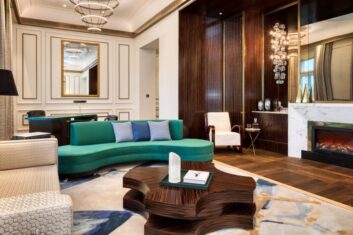 “BluOS is a legitimately ubiquitous platform,” agrees Harrison. “It was originally developed for home use and this makes it intuitive enough for any employee to use in commercial environments. Although we have added enterprise features to the platform as we have expanded into the commercial space, many of these features are hidden, to prevent end users from making undesired changes.”
“BluOS is a legitimately ubiquitous platform,” agrees Harrison. “It was originally developed for home use and this makes it intuitive enough for any employee to use in commercial environments. Although we have added enterprise features to the platform as we have expanded into the commercial space, many of these features are hidden, to prevent end users from making undesired changes.”
BluOS has found a niche in the hospitality and retail markets, with deployments in Cazoo car showrooms, 7-Eleven stores, Nobo, Hyatt and Kempinski hotels, Ferrari, Salty’s, and Yaowarat restaurants.
Harrison: “We are also seeing a lot of success in other verticals, for example universities like University of Alaska, governmental installations like US senate, Museums like the Ferrari museum, stadia like the Prudential Center, co-working spaces like Hub Australia and corporations like Lego, SpartanNash, Boxed Water, King Milling and many more!”
OLD TRENDS
The evolution of custom install into commercial AV isn’t new. Mark Taylor, commercial director at distributor Invision, has been following the trends for some time.
“We have many customers that have been working in the resimercial or, as we call it, light commercial, area for a while,” he says. “Following years of designing and installing bespoke and fully integrated AV solutions that include high-performance entertainment, the expertise garnered by custom installers to truly understand what an end-user wants and deliver it to meet those requirements means that integrators can fulfil the needs of the light commercial sector with ease.”
They also tend to specify residential technologies, says Taylor, “due to their familiarity and experience with the product set. However, this isn’t to say that they won’t start to use commercial products as they begin to become more acquainted with what is available.”
Being part of the Midwich Group, Invision and the recently acquired Pulse Cinemas have access to a wide portfolio of commercial products that support this diversification, as well as extensive experience in understanding integration and pro technology for the home, and hospitality and leisure sectors. “With opportunities available now, we expect to see the resimercial market grow in demand, concludes Taylor. “It should certainly not be underestimated.”
Projection and display specialist Digital Projection typically supplies hardware to commercial cinemas and houses of worship, but has noted an increase in models being deployed in high-end home theatres.
Mark Wadsworth, VP of global marketing, says interest centres on the brand’s Satellite MLS laser system. “It’s a unique kit of modular parts that allows the user to configure their projector depending on their requirements,” he explains. “This projector splits the ‘head’ from the light-source, meaning that all the noise and heat can be placed up to 100m away, leaving the integrator with just a small, compact, near silent projector head to install.”
The benefits are obvious, he says. “The installer doesn’t have to worry about sound proof boxes, or bulky and intrusive projectors in their carefully crafted theatre. As this projector is powered by RGB lasers, it achieves near-REC2020 colour space which enables the viewer to see the widest possible colour gamut while allowing them to experience the movie exactly as the director intended.”
COMMERCIAL HARDWARE
Conversely, AV distributor AWE finds that offering residential installers a curated selection of commercial hardware also works well.
“Sony has a range of displays in its Pro-Bravia range that suits residential integrators very well,” says MD Stuart Tickle. “The BZ series are monitors only, which suit a centrally distributed system as it avoids the potential for a ‘no signal found’ type message, or compromised home screens when no aerial is present. Also, the three year advanced replacement warranty works very well, as it reduces the number of times installers need to go on-site in the event of a product fault developing. There are also times when pro have sizes that consumer models do not, for example a 32in 4k model, and a 100in display.”
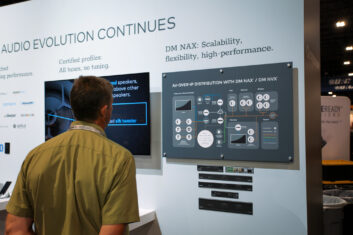 For integrators working across resi and commercial, Tickle advocates the URC control platform, which now boasts a range of amplification native to its own Total Control system, that also fully integrates with Control4.
For integrators working across resi and commercial, Tickle advocates the URC control platform, which now boasts a range of amplification native to its own Total Control system, that also fully integrates with Control4.
“This highly flexible distributed audio solution can provide high-resolution audio around a home, but also is able to pump audio into a noisy bar, as an example,” he says. “Control4 dealers also benefit from enhanced resolution and functionality by including HDA as the audio backbone of their installations. It’s a high-fidelity audio solution with built-in DSP, ducking/paging features, uncompromising quality, and studio sound for residential and commercial environments.”
CROSSOVER POTENTIAL
Lighting is also an obvious candidate with crossover potential. Smart lighting specialist Zuma sells networked downlights and Smart Bezels, with integrated speakers and Alexa voice control.
Head of UK sales, Sarah Chiappi, says its Lumisonic range was originally designed for the home but thanks to its simplicity and convenience, has broken beyond the barriers into the commercial space.
“Replacing multiple devices with a single multi-functional device is desirable to meet sustainability credentials of commercial buildings, providing the performance can match the existing solutions,” Chiappi says. “Zuma offers Wellbeing scenes which makes it a natural product choice for Spas, Health Clinics and commercial applications where former ‘breakout areas’ are undergoing makeovers to create Wellness spaces.
“The trend for biophilic design means soundscapes that incorporate natural sounds such as rain, waves and forests, together with natural circadian lighting that tracks the sun’s colour temperature find a natural home in sensory areas in both private residential and commercial applications.”
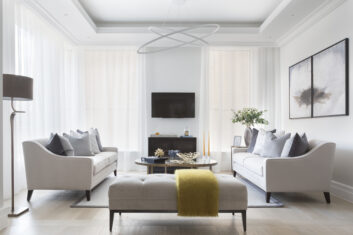 So is resimercial crossover an inevitable consequence of consumer products simply becoming smarter and better connected? Chiappi says yes, but cautions scalability is important. “Consumer products have to be simpler, smarter but also reliable and scalable to handle the complex needs of commercial systems,” she says.
So is resimercial crossover an inevitable consequence of consumer products simply becoming smarter and better connected? Chiappi says yes, but cautions scalability is important. “Consumer products have to be simpler, smarter but also reliable and scalable to handle the complex needs of commercial systems,” she says.
It’ll be interesting to see how much resimercial is showcased at ISE 2024. Certainly, CEDIA is keen to ramp up residential AV’s presence at the expo, as global president and CEO Daryl Friedman told this magazine during 2022’s ISE. Indeed, the very first ISE in Geneva in 2004 was largely residential-facing, and the landmark 20th edition is perhaps an opportunity for CEDIA partners to make more of a mark, alongside broadcast technologies that are sure to proliferate again after a firm showing at this year’s event. Whether any increased residential presence at ISE leans into resimercial, or stays firmly in the home, remains to be seen. But resimercial will remain a hot topic regardless.
